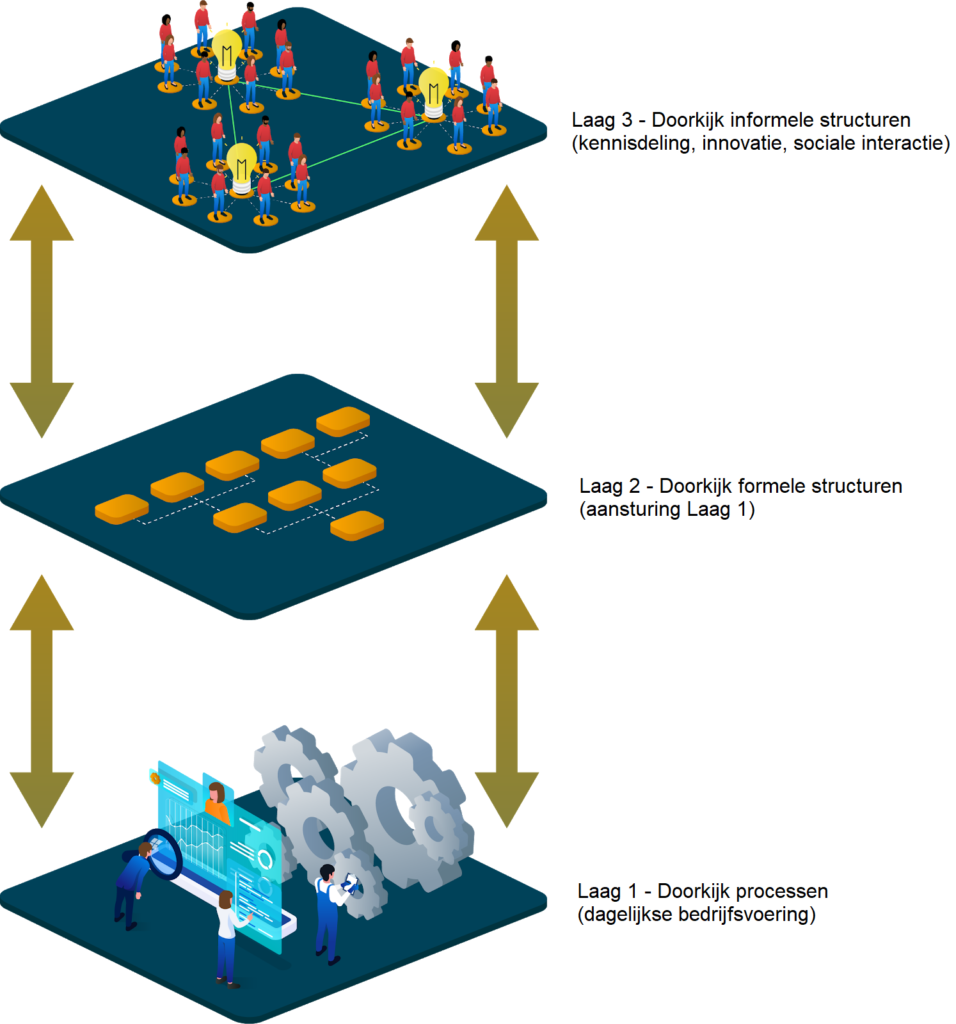There are many definitions of culture. In high school, in Cultural and Arts Education, we learn that culture includes any kind of learned behavior. Behavior that is not fixed in the genes, but is learned.
Translate that to organizations, they are the habits and rules of behavior typical of the people who work there. Freely translated: What do you all tolerate, and what don’t you? Thus, in a desired culture change, behavior seems the most logical starting point. But how do you make behavior insightful, and what behavioral aspects do you focus on?
Organizational structure
To understand behavior, we first look at the structure of an organization:

© 2021 DL Network Analytics BV
You can look at an organization in different ways. Layer 1 – Look-through processes shows how day-to-day operations involve employees working together to serve customers as well and efficiently as possible. Layer 2 – Look-through formal structures shows the hierarchical structure (organizational chart) of the organization. Layer 3 – Look-through informal structures shows the informal interaction between workers. This could include knowledge sharing, idea sharing and development, or social interaction.
Every organization has its own red print and development points. In a knowledge-intensive organization, for example, relatively high importance will be placed on improving and maintaining knowledge transfer between employees.
From understanding organizational structure to measuring culture
Based on the desired goals of culture change, you can determine which behavioral aspects should be the focus of culture measurement.
A concrete example: a law firm would like more women to advance to the top. The intermediate dropout of women is too high. It is suspected that certain behavioral aspects play a role in this, particularly social interaction (who is invited to the drinks and who is not), bonds of trust (can I trust this person to work together), and interdependencies (who do you depend on to do your job well).
With this clear hypothesis, we can begin to measure. Social interaction, bonds of trust and interdependencies are made visually understandable and measurable with organizational network analysis. It thus provides concrete tools for intervention measures and the ability to monitor them and, if necessary, make timely adjustments.













